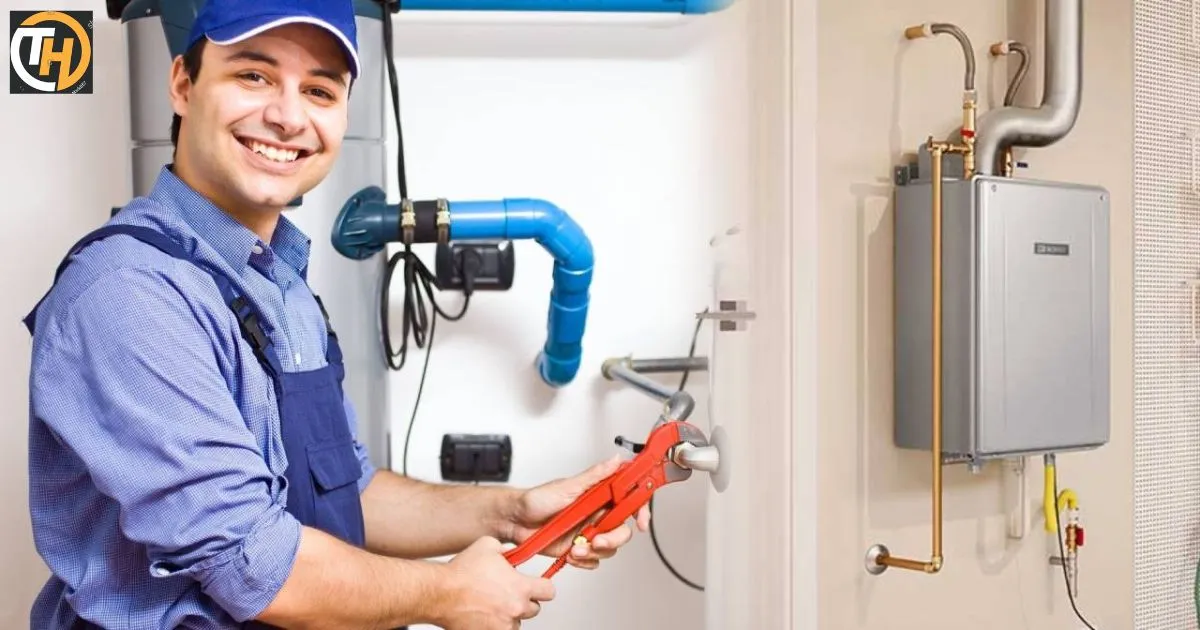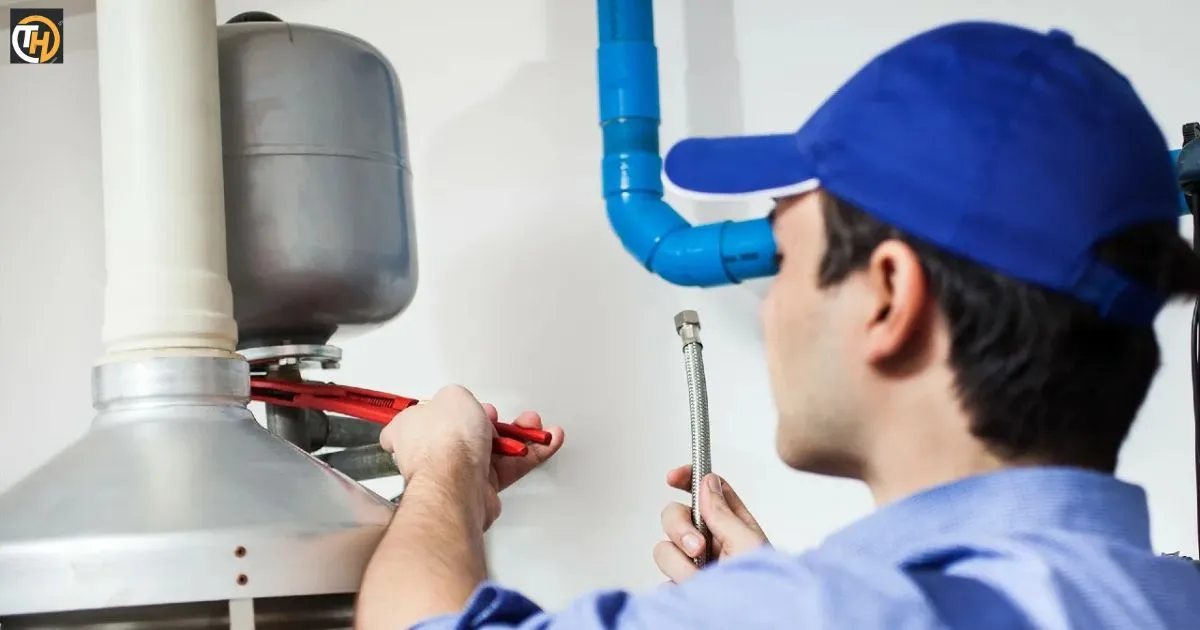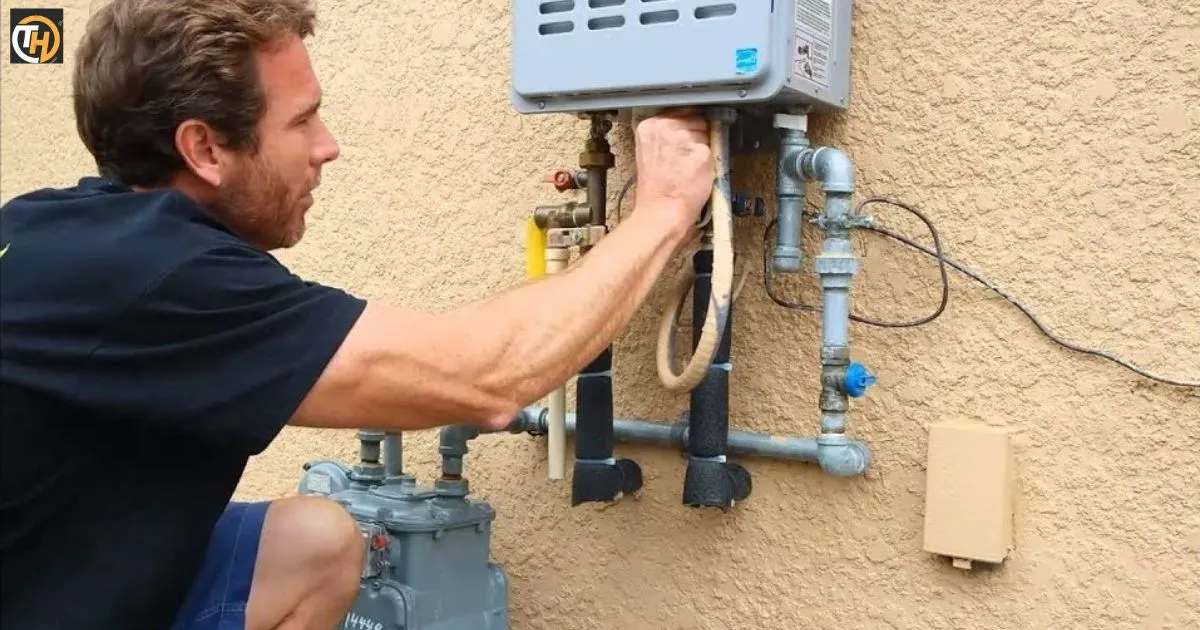A tankless water heater, also known as an on-demand water heater, heats water only when it’s needed. These types of heaters are efficient, compact, and provide unlimited hot water. However, in freezing temperatures, they can sometimes freeze, causing significant problems.
Imagine waking up on a chilly winter morning, ready for a warm shower, only to find out that your tankless water heater has frozen overnight. Not only does this mean no hot water, but it could also potentially damage your heater. But don’t worry, there are ways to thaw out your tankless water heater and get it back up and running.
There are several methods to thaw out a frozen tankless water heater, including using a hairdryer, wrapping the unit with heat tape, or applying warm towels to the unit. However, safety should always be your top priority. Always turn off the power supply to the water heater before starting any thawing process.
Signs of a Frozen Tankless Water Heater
Identifying indicators of a frozen tankless water heater is crucial, especially during the cold winter months. A frozen water heater can lead to serious damage and costly repairs. Therefore, it’s important to know the signs and take immediate action if you suspect your tankless water heater is frozen.
Understanding how freezing affects the unit’s performance
Freezing temperatures can have a significant impact on the performance of a tankless water heater. When the water inside the unit freezes, it expands. This expansion can cause the internal components of the water heater to crack or burst, leading to water leaks and potential water damage.
Signs Include
No hot water flow: One of the most obvious signs of a frozen tankless water heater is the lack of hot water. If you turn on a hot water tap and only cold water comes out, your water heater may be frozen.
Strange sounds from the unit: If you hear unusual noises such as cracking or popping sounds coming from the water heater, it could be a sign that the water inside is freezing and expanding.
Reduced water pressure: If the water pressure from your hot water taps is significantly lower than usual, it could be a sign that the water inside your tankless water heater is frozen, blocking the normal flow of water. Remember, if you notice any of these signs, it’s important to act quickly to prevent further damage.
Safety Precautions Before Thawing
The importance of safety when dealing with frozen appliances cannot be overstated. Before attempting to thaw out a frozen tankless water heater, there are several precautions you should take to ensure your safety and the safety of those around you.
Precautions to Take
Here are some safety measures you should follow:
Turn off the power supply
Before you begin, make sure to turn off the power supply to the water heater. This will prevent any electrical accidents while you’re working on the unit.
Wear insulated gloves
When dealing with frozen appliances, it’s important to protect your hands from the cold. Wearing insulated gloves can help prevent frostbite and other cold-related injuries.
Ensure proper ventilation

If your water heater is located in a small or enclosed space, make sure the area is well-ventilated before you begin. This will help prevent the buildup of harmful fumes or gasses that could be released during the thawing process.!
Thawing Methods for Tankless Water Heaters
Thawing Methods for Tankless Water Heaters
Exploring effective methods to thaw out a frozen tankless water heater is crucial to restoring its functionality. Each method requires careful execution to ensure the safety and integrity of the unit.
Step-by-step instructions for each method
Here are some thawing techniques you can use:
Using a hairdryer or heat gun: This is a common method for thawing frozen pipes and appliances. Plug in the hairdryer or heat gun and set it to a medium heat setting. Hold it a few inches away from the frozen parts of the water heater and move it around slowly. Be sure not to concentrate the heat in one area for too long to prevent damage.
Wrapping the unit with heat tape: Heat tape is an electrical device that generates heat when plugged in. Wrap the heat tape around the frozen parts of the water heater and plug it in. The heat from the tape will gradually thaw the ice.
Applying warm towels to the unit: Soak some towels in warm (not hot) water and wring them out so they’re damp but not dripping. Wrap these towels around the frozen parts of the water heater. As the warmth from the towels penetrates the unit, it will help to thaw the ice.
Preventing Future Freezing Issues
It’s important to take preventive measures to avoid future freezing issues with your tankless water heater. This not only ensures the longevity of your unit but also saves you from potential repair costs and inconvenience.
Tips and preventive measures
Here are some tips and preventive measures you can take:
Install insulation around the unit: Insulating your water heater can help protect it from freezing temperatures. You can use insulation blankets or foam pipe insulation for this purpose. Make sure to follow the manufacturer’s instructions when installing insulation.
Schedule regular maintenance checks: Regular maintenance checks can help detect potential issues before they become serious problems. This includes checking for leaks, inspecting the vent system, and ensuring the unit is clean and free of debris.
Consider installing a freeze prevention kit: Some manufacturers offer freeze prevention kits for their tankless water heaters. These kits are designed to protect the unit from freezing and can be a worthwhile investment, especially if you live in a region with harsh winters.
Insights into insulation and regular maintenance
Insulating your water heater and scheduling regular maintenance checks are two effective ways to prevent freezing issues. Insulation helps maintain the temperature of the water inside the unit, while regular maintenance ensures the unit is in good working condition. Both these measures can significantly reduce the risk of freezing.
Professional Assistance and Conclusion

Knowing when to seek professional help is crucial when dealing with a frozen tankless water heater. If you’re unsure about any aspect of the thawing process, or if the problem persists despite your efforts, it’s always best to consult with a professional. They have the necessary training and experience to safely and effectively resolve the issue.
Recap of thawing methods and preventive measures
We’ve discussed several methods to thaw a frozen tankless water heater, including using a hairdryer or heat gun, wrapping the unit with heat tape, and applying warm towels to the unit.
Emphasizing the importance of prompt action
A functioning tankless water heater is essential for your comfort and daily routines, especially during the cold winter months. Therefore, if you notice any signs of a frozen water heater, it’s important to take prompt action.
Here’s a simple table summarizing the purpose of the article with key points and descriptions:
| Purpose of the Article | Key Points | Description |
| Understanding the Issue | Signs of a frozen tankless water heater | Identify indicators such as no hot water flow, strange sounds, and reduced water pressure, helping readers recognize if their tankless water heater is frozen. |
| Ensuring Safety | Safety precautions before thawing | Highlight the importance of safety, outlining measures like turning off the power supply, wearing insulated gloves, and ensuring proper ventilation for a secure thawing process. |
| Effective Thawing Methods | Thawing techniques using a hairdryer, heat gun, and more | Provide step-by-step instructions on various methods to thaw out a frozen tankless water heater, ensuring readers have practical solutions to address the issue. |
| Preventing Future Freezing Issues | Preventive measures like insulation and regular maintenance | Offer tips to avoid future freezing, including installing insulation, scheduling maintenance checks, and considering freeze prevention kits for long-term protection. |
| Knowing When to Seek Professional Help | Guidance on when to involve professionals | Advise readers on recognizing scenarios where professional assistance is necessary, emphasizing the importance of timely intervention for a properly functioning unit. |
| Conclusion and Recap | Summarizing thawing methods and preventive measures | Recap the key points, underlining the significance of prompt action in thawing a tankless water heater and implementing preventive measures for sustained functionality. |
This table provides a quick overview of the article’s purpose, key points, and their respective descriptions.
FAQs
Q: How do you thaw a frozen hot water heater?
A: Thaw a frozen hot water heater using methods like a hair dryer, heat gun, or warm towels on the affected parts.
Q: How can you tell if your tankless water heater is frozen?
A: Signs of a frozen tankless water heater include no hot water flow, strange sounds, and reduced water pressure.
Q: How do I keep my tankless from freezing?
A: Prevent tankless water heater freezing by installing insulation, scheduling regular maintenance, and considering a freeze prevention kit.
Q: Can water be too cold for a tankless water heater?
A: Yes, extremely cold water can affect the efficiency of a tankless water heater in heating water.
Q: Why does a tankless water heater turn on when using cold water?
A: Tankless water heaters may turn on when using cold water due to a phenomenon known as “cold-water sandwich,” where residual cold water in the pipes briefly emerges during transitions.
Conclusion
Thawing out a frozen tankless water heater is a crucial task to restore its functionality and prevent long-term damage. By understanding the signs, taking safety precautions, and utilizing effective thawing methods, homeowners can ensure a consistent and reliable hot water supply.
Dealing with a frozen tankless water heater can be a daunting task, but with the right knowledge and tools, you can effectively handle the situation. Stay warm, stay safe, and remember – when in doubt, don’t hesitate to seek professional help!











